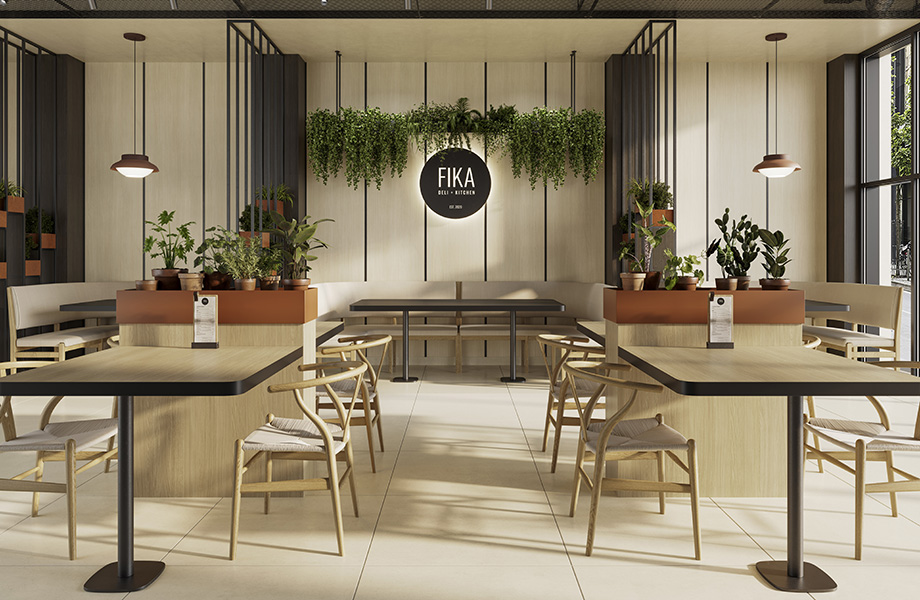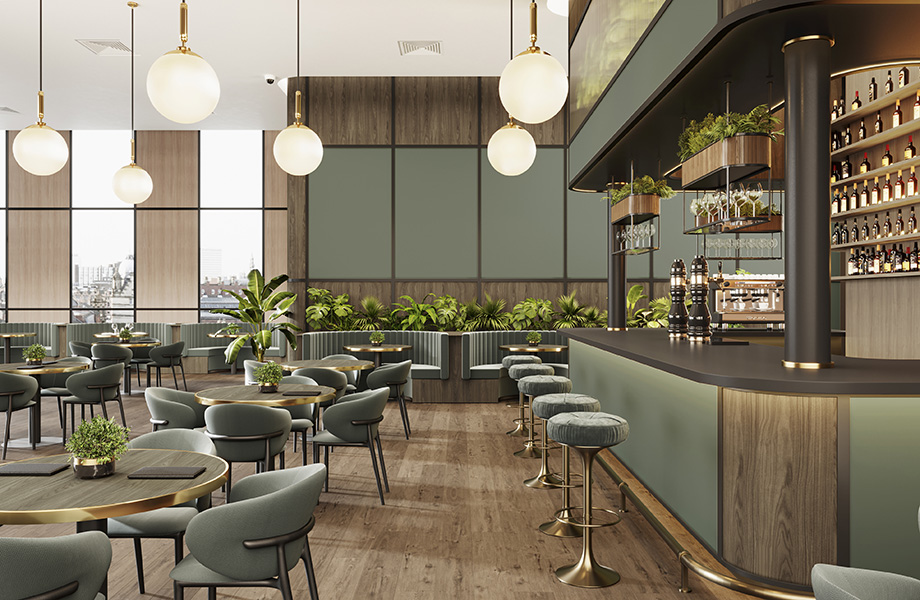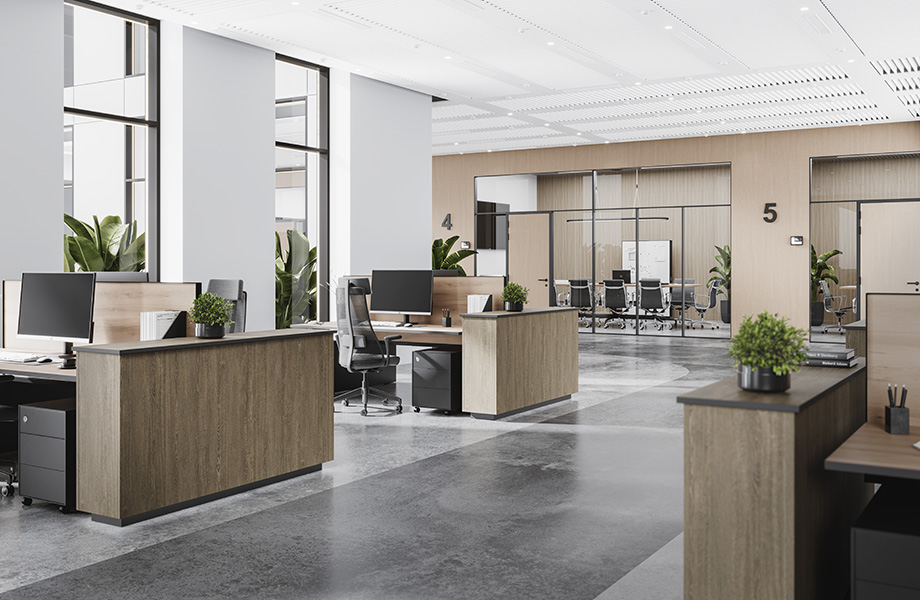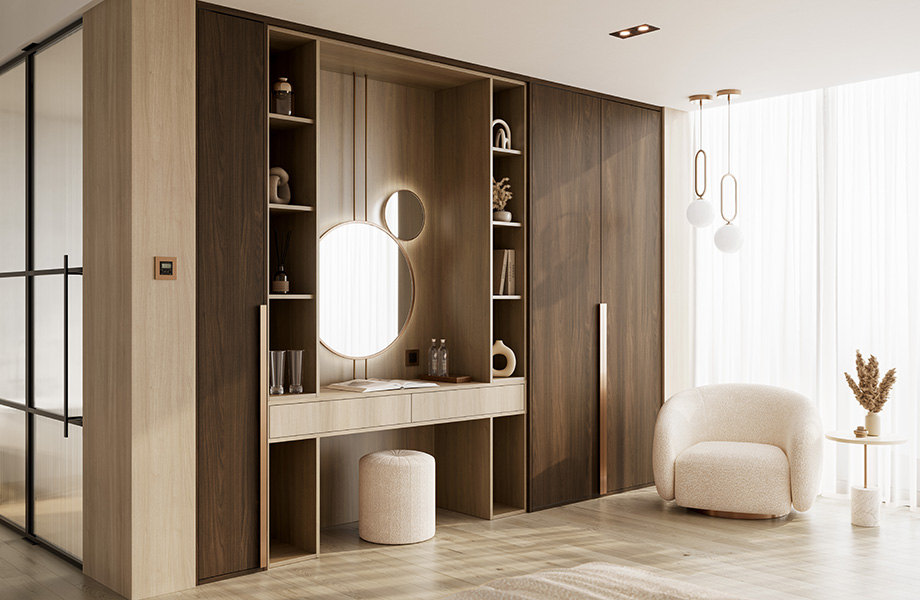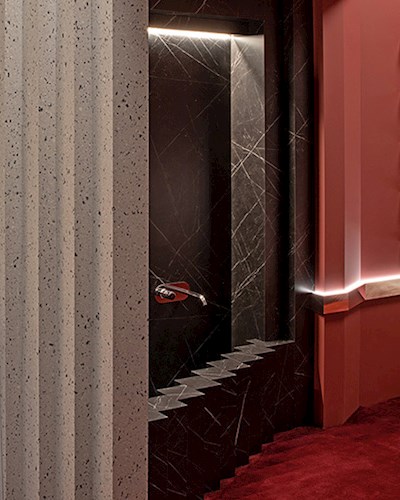Natural Wood vs Woodgrain Laminate
Natural Wood vs Woodgrain Laminate
The question of natural wood vs woodgrain laminate is heard regularly in commercial and residential interior specification. While natural wood can be a beautiful and versatile material for interior design, there are a few potential issues to consider.
1. Cost: High-quality natural wood can be expensive, especially if you opt for rare or exotic varieties.
2. Maintenance: Natural wood requires regular maintenance to preserve its appearance and durability. It may need periodic refinishing, polishing, or sealing to protect it from moisture, stains, scratches, and UV damage.
3. Vulnerability to moisture: Wood is susceptible to damage from moisture and humidity. Excessive exposure to water or high humidity levels can cause warping, swelling, or even mold and mildew growth.
4. Durability and wear: While wood is generally durable, it can still be susceptible to scratches, dents, and wear over time, particularly in high-traffic areas. Some wood species are softer and more prone to damage than others.
5. Sustainability: The use of natural wood raises concerns about deforestation and the depletion of forest resources. It's also important to consider the energy used to forest and carbon footprint left when shipping the wood to wherever your project is located.
6. Insect infestation: Wood can be vulnerable to insect infestations, such as termites and beetles, especially if proper precautions are not taken during the manufacturing process or if the wood is not adequately protected.
Given the concerns above, a popular alternative material to natural wood is a woodgrain laminate. Designers are free to create the beauty, warmth, and versatility of natural wood but with the hard-wearing durability of a laminate surface. Wood laminate sheets can be fabricated into walls, doors, washrooms and furniture to name a few.
Opting for a woodgrain laminate provides the many benefits in addition to the stunning colour options:
1. Laminate is highly resistant to water, chemicals, abrasions, scratches, and stains.
2. Ease of cleanliness and maintenance meaning the ongoing upkeep for the client is minimal.
3. Cost effective with long life expectancy in comparison to natural materials.
4. Laminate maintains it’s colour-fastness meaning woodgrains won’t age like natural materials. Your colour scheme will remain the same for years to come.
Natural wood will always have a place in design but as an alternative, the Formica® Woods Collection contains over 80 timeless woodgrains from around the globe, allowing architects the freedom to specify a woodgrain in a design palette with the knowledge that the material is durable and long lasting and without the risks from using a natural material.
Wood in interior design and architecture has been a material choice of designers for hundreds of years. The look, the smell and the touch of wood can connect with most audiences but having an alternative option that is cost effective, easy to fabricate and maintains its good looks and quality for years to come is worth considering.
Find out more about the Formica Woods Collection and order a free sample

